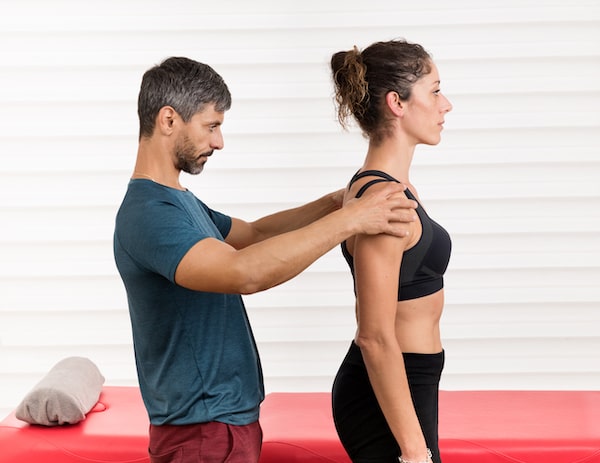One of the most common complaints that physiotherapists have been hearing since the start of the COVID pandemic is that people are noticing more and more aches and pains that they are often attributing to their “poor” posture.
Individuals who have been advised or ordered to work from home have typically experienced a sudden and significant change in a lot of contextual factors, including but not limited to their workstation (i.e. different chairs, desks, computers, and ergonomics in general), their daily routines (overall decreases in commuting time, water cooler banter and scheduled breaks to catch up and socialize with colleagues), and an obvious change in life stressors (…COVID). Additionally, many people are acknowledging that they do a lot less movement throughout the day because there’s nobody to socialize with or no meetings in a boardroom at home. But is the sudden increase in neck and lower back pain while doing typical job tasks really because of “bad” posture?
Firstly, I think it is important to define posture. The easiest way to describe posture is the position in which someone exhibits while performing a task. Postures can be dynamic (i.e. during our movements like walking and running), or static (i.e. when we are not moving or in a position of rest). How we look varies from task to task and person to person, largely due to individual differences in body shapes and sizes, or anthropometrics. Typically, most of us will assume postures that require the smallest amount of energy possible to complete a specific task.

If there is an easier posture to perform a task in, chances are that our bodies will naturally revert to doing our tasks in those less energy consuming postures. So, back to the original question – can we blame this increase in pain on posture?
What does the research say?
A 2010 article by researcher Eyal Lederman sought out to review the literature and determine if there was a link between how we sit and move and if it causes pain, otherwise known as the postural-structural-biomechanical model (PSB). Interestingly, what Lederman found was that the existing body of research has actually not identified any strong associations between the PSB model and posture related pain. More specifically, according to research, there is a lack of association between our asymmetries and imbalances, resting posture, differences in anthropometrics/body shapes and sizes, and even our mobility and how much pain we experience.
I think I may be getting more aches and pains while working from home...
Now you’re probably wondering, if you are one of the many people who have experienced more aches and pains than usual while working from home, what does this all mean? The point of this blog post is not to get into the full complexities of posture and pain, but more so to help liberate people from worrying too much about their posture. Rather than continuing to demonize your posture for contributing to your symptoms, try introducing healthy movement breaks into your day. Whether it’s just getting up every half hour to walk to your kitchen for a glass of water or a snack, taking a quick movement break to walk around your house, or doing some stretches every hour or two to offset the decrease in activity throughout your new routine, frequent changes to your posture can help!
For some individuals who might be more concerned about their newfound aches and pains, an assessment with a physiotherapist can be a great starting point to see what strategies might be the most helpful or sustainable for you.
